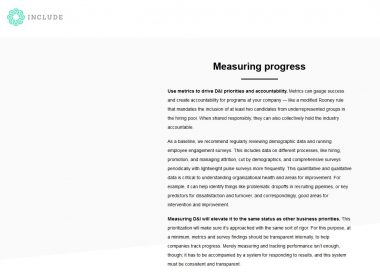Indicators must be both measurable and meaningful. They provide insight into whether a desired goal has been achieved.
Very often, activities and actions are reported instead of meaningful indicators. For example, your goal may be to increase the number of people of colour on your staff. You could develop an equitable employment policy to support this and alert all staff to the new policy.
This alert could be measured (you can count the number of staff who were emailed, even track the number of staff members who opened the email), but it is not a valuable indicator. That’s because it does not indicate any actual change in the diversity of staff. Instead, track the number of people of colour who are employed.
Activities may form part of your strategy, but they should not stand in for indicators in your evaluation. Other activities that don’t demonstrate increased diversity of staff include the number of staff who attend diversity training or the number of short-term internships that have not led to paid employment.
How do I do it?
Create indicators that are both measurable and meaningful, not simply activities or actions. Look for indicators that truly establish whether your original goals have been achieved.
Valuable indicators include the percentage of diverse creatives or staff employed, tracked separately for leadership and creative decision-making roles, percentage of diverse programming (eg writers of performed pieces), budget allocation for diverse projects and diverse marketing, diverse staff satisfaction scores and retention rates, pay-gap between diverse and other employees or commissions, and the cultural diversity of audiences.
